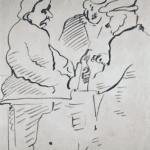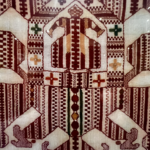Dressed in colorful quilted robes, residents of Samarkand gather on the steps of the Shir-dor madrassah, one of three Islamic universities on Registan Square. The Registan is the historical heart of Samarkand, a city as old as Babylon and Rome. For centuries, camel caravans carried silks and carpets, spices and dyes, exotic birds and precious stones to the city’s bazaars.
Samarkand’s wealth was a lure for successive waves of conquerors. In the 4th century B.C., Alexander the Great crossed the Oxus River (now the Amu-Darya) to conquer the Persian province of Sogdiana. In the 8th century, the Arabic Conquest brought Islam to the region. Genghis-Khan’s nomadic hordes plundered Samarkand in the 13th century, and his descendent, Tamerlane, ruled his huge empire from the city. In 1868, Samarkand fell under Russian Imperial rule, later to become part of Soviet Uzbekistan. After the Soviet Union’s collapse, Uzbekistan gained sovereignty.





You must be logged in to post a comment.